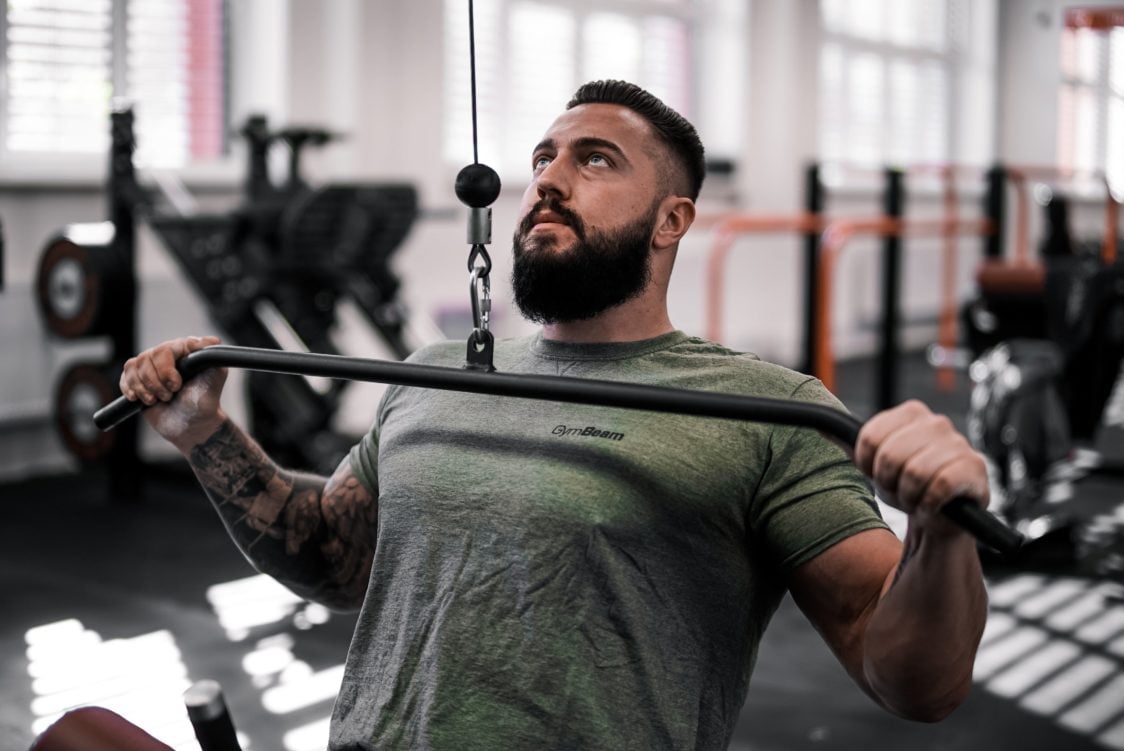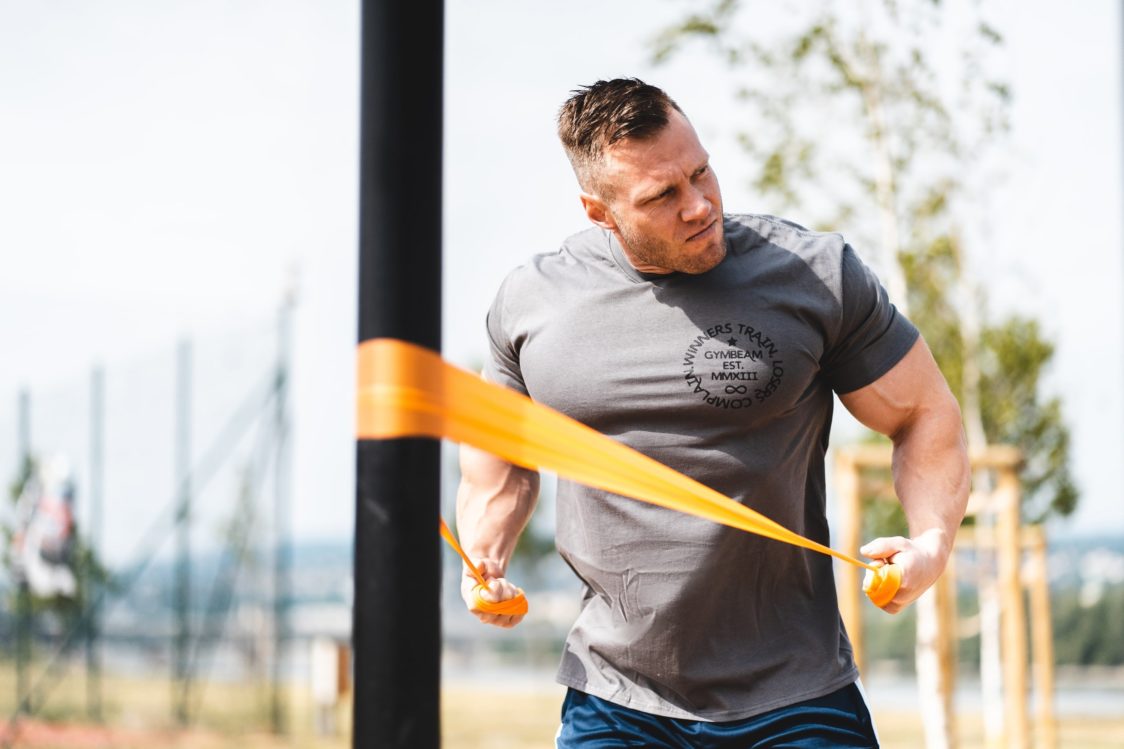Table of Contents
We will probably experience a real shock when we get under a cold shower in the morning, meet a bear in the woods, or find ourselves in front of a map of the New York subway, while we have lived alone so far. Is it possible to “shock and confuse” muscles so that our desired results arrive faster?
This idea was quite popularized by the high-intensity P90X exercise programs and fitness trainer Tony Horton. For faster and more visible results according to this method, it is enough to constantly load muscles or otherwise confuse them and undergo a constantly changing training program. This can include elements of weight training, karate, yoga, sprint training and other sports from a variety of industries. In English, this term is known as Muscle Confusion. [1] [2]

To put it in a simple perspective, it is a matter of constantly surprising muscles with different types of workouts, so that the muscles do not get used to the given type of movement and we are constantly pushing our limits towards maximum performance and delaying performance stagnation. Let’s imagine that we have strength training on Monday, crossfit on Wednesday, running on Friday and circular training on Sunday. [2]
I myself have heard this idea several times from athletes who have already trained for a year. But as with everything, not all that shines is gold and everything is a little more complicated.
What makes training successful, and are constant training changes and “shocking” muscles unnecessary?
A properly set training plan allows us to achieve better results speaking of weights and overall body looks in the long run. [3]
What variables does the training plan follow?
Training volume represents the work performed during training, such as the number of sets and repetitions during training or over a longer period of time. We can also include the number of rowing or running intervals here.
The intensity of training can be compared to the difficulty. In strength training it is mainly about the weight on the barbell and in running training we can talk about speed.
The frequency of training expresses how often we train a muscle part or go running or performing another sport.
We cannot expect radically visible results from one or two workouts a week, even if we go to bed with a barbell. Simply put, you need to train “just enough”, neither little nor much. [4]
From time to time, however, shocking muscles with another type of training may seem like the perfect way to overcome the stagnation of performance or get rid of the last kilos of Christmas 2015 that are holding on to us like ticks. You can also train fully outdoors. The article Outdoor training – why and how to start exercising on the fresh air will tell you how.

Proper training planning leads to a sexy figure and perfect sports performance
When you can no longer move forward in strength or running performances for a long time, maybe you should reconsider your training. Do you practice the same exercises with the same load, and with the same number of repetitions over and over again? For a year now, you we been running for an hour every other day on the same route with the same pace?
Then it is not surprising if your performance does not improve. Any long-term sports load is manifested on our body by adaptations. Strength will increase, some of those muscles will grow, we will lose a little fat, the overall physical condition and performance of the circulatory systems will increase for better coping with endurance.
However, if you still give the body the same impulse, you cannot expect different results of adaptation in the form of a growing chest after bench press exercises with the same load. Nor can you expect to run a marathon well when you run 10 kilometers every other day. At the same time, we remembered our older, but excellent article that might interest you – Classic cardio or HIIT training – which burns fat better?

You might be interested in these products:
How to properly improve sports performance and overcome stagnation in both training and weight loss?
If we want to constantly improve, we must also add and achieve progressive overload in training, which will help us achieve a stronger training impulse, which will be reflected in better results in the long run. [5]
Progressive overload can be achieved by:
Larger training volume in the form of a larger number of sets within the exercises during training. For a start, instead of 3 sets, let’s do 4. We can also use the practice of one extra exercise beyond the training plan.
Higher intensity of training, which we achieve by increasing the load on the barbell. Even those small discs that weigh 1.25 kilograms count. In particular, we will achieve greater mechanical muscle tension, which is one of the indicators of muscle growth.
By shortening the rest intervals between sets, we do the exercises in a shorter time and with greater metabolic stress, which is an indicator of muscle growth.
By slowing down the exercise technique, we increase the time under tension (TUT) and again we increase the metabolic stress.
How many repetitions during training per muscle part is the most reasonable choice? This is a range of 40-60 repetitions. We can bounce back from more strenghty 4-6 repetitions in a complex exercise to “bodybuilding” 8-12 repetitions in the next exercise. [6] If you do not know how to compile a training plan, our article How to compile a quality training plan – tips, trainings, the most common mistakes will definitely help you.

3 mechanisms stimulating muscle growth, without which the results will not be achieved
The exhaustive work of Schoenfeld (2010) shows that the primary 3 factors are responsible for muscle growth due to strength training. [3]
Mechanical tension. We achieve greater mechanical tension with more weight on the barbell.
Muscle damage is a manifestation of a training load, which is marked on the muscle cells by damage and the formation of a microtrauma. Subsequently, they are repaired and the muscles become larger and stronger.
Metabolic stress is stimulated more with a longer time under tension (TUT) or more repetitions per set aka “pumping sets”, and we can imagine it as the old familiar “muscle burning during exercise.”
Training periodization: Are “muscle confusion” and frequent training changes completely unnecessary?
The key to constantly shifting sports performance and overcoming stagnation is a properly set up training plan respecting the basic mechanisms of muscle growth. Increasing the intensity of training does not go on indefinitely. As part of training planning, we should increase the load in the mesocycle (medium-term training period) lasting approximately 4-8 weeks. [3] [7] [8]
After this block, there should be a roughly weekly deload phase of training, which does not mean Netflix ‘n chill. Under this, we can imagine a reduction in the intensity of training by about half, in order to fully reflect the training adaptations. Simply put, we can reduce the load on the barbell or the number of drilled sets. We can also use longer breaks to rest between sets. [8]
Muscle confusion and constant training changes will not bring us better and faster results. On the contrary, they can prolong the path to our goals. Imagine that our goal is to increase leg strength, and our training should focus primarily on complex heavy strength exercises such as squats, deadlifts, or lunges. Instead, we would practice one workout with our own weight and replace another with, for example, HIIT. That will not help us reach our goal. Paradoxically, we would be robbing ourselves of performance using this strategy.

Instead of muscle confusion, it is sometimes better to swap the order of exercises in training for greater motivation
In a study by Enek Baz-Valle and colleagues (2019), the researchers found that alternating the order of exercises in an 8-week training plan based on computer program output was less tedious for an experimental group of athletes than a classical training program where the control group trained exactly set training plan still the same way. Both groups trained 4 times a week, underwent approximately the same training volume during the program and achieved similar results. But we must not confuse this with the principles of “muscle confusion”, which is based on changing the type of training. [9]
Unless we have specific goals, performing each training a different sport can also be beneficial
Changing types of workouts during the week can be beneficial by not getting bored quickly and falling into a training stereotype. You can look forward more to trainings and be more motivated. But this, in turn, is a very individual matter.
Thanks to a combination of various sports activities (strength training, HIIT, running, crossfit, etc.) we can work on almost all components of sports performance, such as maximum strength, strength endurance, speed endurance or general aerobic endurance, and thus improve overall physical fitness. If you have trouble exercising regularly and it prevents you from achieving your goals, article 6 Steps to Iron Self-Discipline can help you achieve your fitness goals.
What is the lesson?
The results at school, at work or in sports are due to hard work, patience, perseverance and a properly set plan. Once we achieve performance stagnation, it’s time to look at the training plan and think about whether it’s set up correctly. It doesn’t make sense to keep working out the same way and expect different results.
Other lifestyle factors go hand in hand with an optimally set training plan that respects the principles of progressive overload. Without sleep, good nutrition, and coping with stress, it will be far more difficult to achieve our goals than if we focus on improving all the lifestyle factors.
Unfortunately, frequent changes in training and sports in order to shock muscles according to the Muscle Confusion principle will not bring faster and better results. Increasingly demanding training with enough time for regeneration will bring you quality results, you just need to be patient and trust the process. It is ideal to consult a training plan with an experienced trainer.
[1] Womans Health – Muscle Confusion – https://mavendoctors.io/women/fitness/muscle-confusion-rd27DjYFvU61kp0CjO0LZA
[2] Gabrielle Kassel — Can Muscle Confusion Be the Key to Overcoming a Weight-Loss Plateau? – https://www.livestrong.com/article/13724088-muscle-confusion/
[3] Brad Schoenfeld – The Mechanisms of Muscle Hypertrophy and Their Application to Resistance Training – https://doi.org/10.1519/JSC.0b013e3181e840f3
[4] Jozo Grgic, Schoenfeld, B. J., Davies, T. B., Lazinica, B., Krieger, J. W., & Pedisic, Z. — Effect of Resistance Training Frequency on Gains in Muscular Strength: A Systematic Review and Meta-Analysis. – https://doi.org/10.1007/s40279-018-0872-x
[5] William J. Kraemer, W. J., Adams, K., Cafarelli, E., Dudley, G. A., Dooly, C., Feigenbaum, M. S., Fleck, S. J., Franklin, B., Fry, A. C., Hoffman, J. R., Newton, R. U., Potteiger, J., Stone, M. H., Ratamess, N. A., Triplett-McBride, T., & American College of Sports Medicine – American College of Sports Medicine position stand. Progression models in resistance training for healthy adults – https://doi.org/10.1097/00005768-200202000-00027
[6] Daniel A. Hackett, Amirthalingam, T., Mitchell, L., Mavros, Y., Wilson, G. C., & Halaki, M. – Effects of a 12-Week Modified German Volume Training Program on Muscle Strength and Hypertrophy - A Pilot Study – https://doi.org/10.3390/sports6010007
[7] Roberto Simão, R., Spineti, J., de Salles, B. F., Matta, T., Fernandes, L., Fleck, S. J., Rhea, M. R., & Strom-Olsen, H. E. – Comparison between nonlinear and linear periodized resistance training: Hypertrophic and strength effects – https://doi.org/10.1519/JSC.0b013e318231a659
[8] The Barbell Physio – The Most Overlooked Training Variable: Training Volume – https://thebarbellphysio.com/overlooked-training-variable-training-volume/
[9] Eneko Baz-Valle, Schoenfeld, B. J., Torres-Unda, J., Santos-Concejero, J., & Balsalobre-Fernández, C. — The effects of exercise variation in muscle thickness, maximal strength and motivation in resistance trained men – https://doi.org/10.1371/journal.pone.0226989

